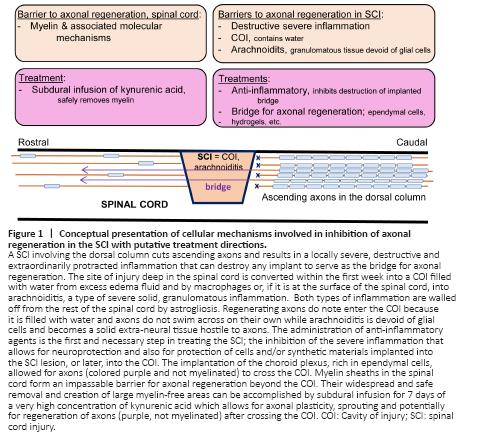脊髓损伤
-
Figure 1|Conceptual presentation of cellular mechanisms involved in inhibition of axonal regeneration in the SCI with putative treatment directions.

Given the above considerations summarized in the Figure 1, therapeutic neuroregeneration following the SCI is the matter of properly designed pre-clinical experiments targeting the inflammation, involving hydrogels or other materials acting as the bridge for axonal regeneration across the COI and the removal of myelin sheaths in the white matter areas targeted for axonal regrowth with infusion of kynurenic acid. Considering that axonal regeneration in the filum terminale (an integral part of the CNS in the rat) and in the spinal cord is about 2 mm a day at its fastest (Kwiecien and Avram, 2008; Kwiecien, 2013), it will be a slow process in a much longer human spinal cord. Therapeutic neuroregeneration in clinical trials and beyond will require in vivo imaging to monitor regenerating axons throughout the therapy, another challenge for in vivo pre-clinical studies.